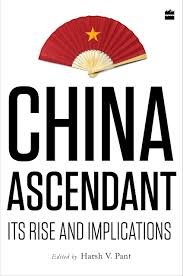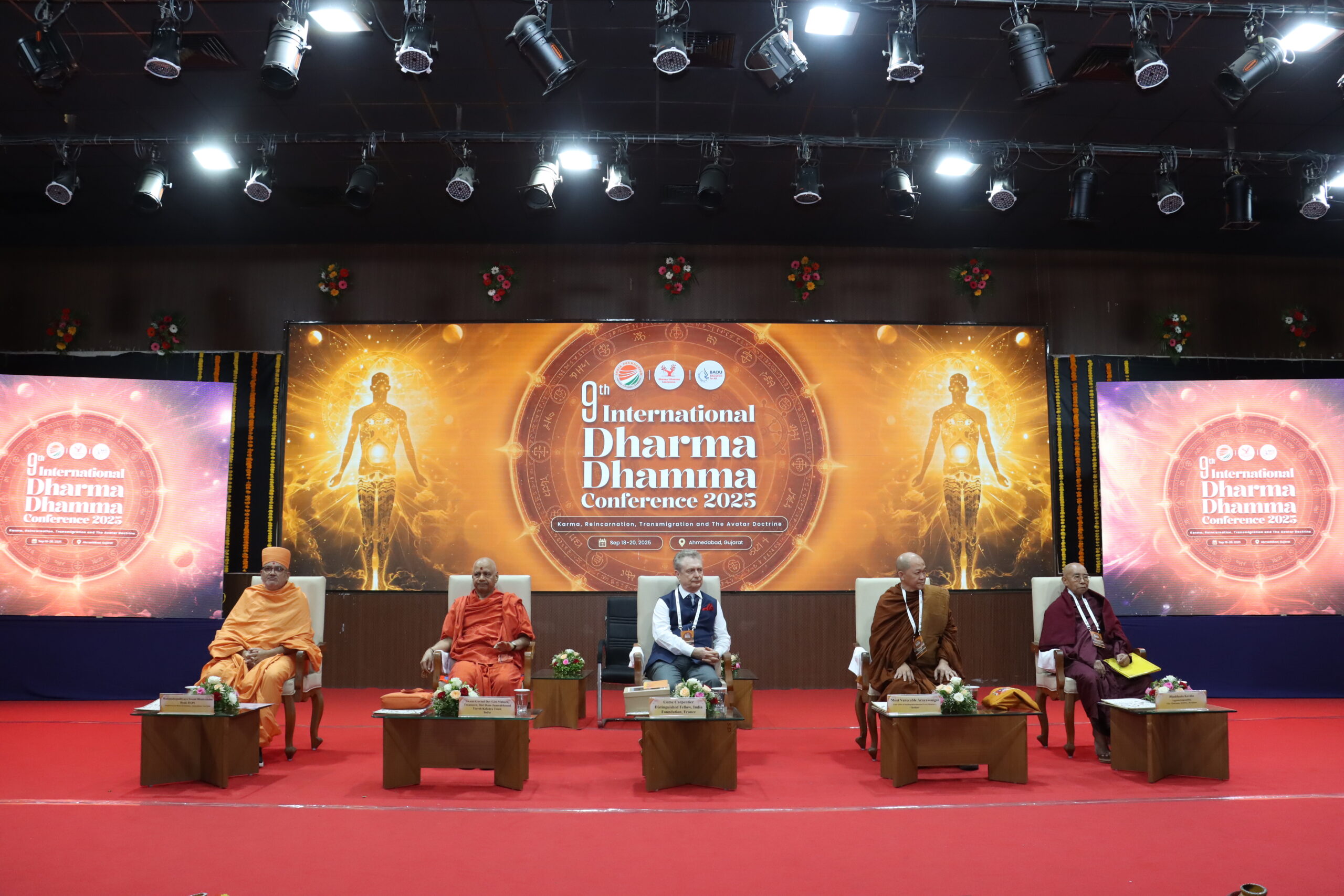Reviewed by Devrath JhunJhunwala
The ‘rise’ of China has emerged as a major theme of inquiry within academic and policy-making echelons across the world. Every aspect of Chinese politics, economics and society has seen rapid changes as China seeks to position itself as the ‘hegemon’ of the world order. ‘China ascendant: Its rise and implications’ is yet another addition to the voluminous literature on the subject. Through a series of essays focusing on various aspects of China’s growth and its effects, the editor, Harsh V. Pant, through a series of skilfully arranged book chapters, presents a coherent picture of a rising China and its implications for India and the rest of the world. The book is rich in the fluid use of statistical data and political analysis and seeks to juxtapose China’s rise in relation to India, and in doing so, suggests policy options for dealing with China.
China’s penetration, diplomatically and economically, within the Indo-Pacific region is viewed as compromising Indian strategic objectives. Essays in the book portray Chinese growth as a challenge to India’s foreign policy objectives and look into response options in terms of Prime Minister Narendra Modi’s ‘Act East’ policy. It presents an unbiased factual study of the hard power asymmetry between India and China through key economic and military indicators, which bring out the fact that India still has a long way to go to match Chinese capabilities. To come to par with China on the economic and military front, would require huge financial outlays for many years, and a peaceful investment climate. In his book chapter titled ‘Can India counter emerging Chinese capabilities like stealth aircraft?’ Pushan Das bluntly states that Indian capabilities are limited. The chapters on Space Militarisation and Cyber Security once again emphasise the need for India to step up efforts in Research and Development (R&D), if India is ever to catch up with China on this score.
Beyond hard power projection, the book analyses Chinese involvement across the world, especially in South Asia. China’s growing relationships with countries such as Bangladesh, Sri Lanka and Afghanistan, traditional allies of India, are seen as solely for the benefit of China and describe economic dependency issues that could prove to weaken such nations. A key facet of this is Chinese presence in the Indian Ocean Region (IOR), which India has strategic interests in. China’s economic investments, military presence and diplomatic relations with nations in the IOR has raised concerns of Chinese intentions with respect to India, with the likelihood of China attempting a strategic encirclement of India. The IOR has been elaborated on as a key determinant of Chinese foreign policy goals with respect to India. With billions of dollars’ worth of goods and, more importantly, energy flowing through the IOR, both China and India see great strategic value in maintaining close ties with nations such as Sri Lanka, Maldives and Myanmar. India is unable to match Chinese economic inducements to these countries, but there is no reason why India should do so. There are other aspects which determine foreign policy which are India’s strengths such as soft power and a strong cultural connect, which India needs to exploit in its relations in the IOR.
The book devotes two chapters on Chinese naval power. ‘Sea Drones: Implications of the great underwater wall of China’ by Sylvia Mishra and ‘China’s naval power and prestige’ by Tuneer Mukherjee put forward the key instruments of such regional power projections. Both essays stress on growing technological development in both stealth and long-range weapon systems, especially with UUV’s (Unmanned Underwater Vehicle) with the Chinese navy. The need for a strict international code governing such modern naval technology is seen as a way to prevent Chinese challenges to national sovereignty of regional nations.
Building on South Asian affairs, a country that has been naturally focused on in the book is Pakistan, where China has found an opportunity to carry out a multitude of foreign policy objectives successfully. These include access to the Arabian Sea, a market for Chinese goods and a method to direct Indian attention away from wider regional issues. The China-Pakistan Economic Corridor (CPEC) is stressed as a massive undertaking that greatly enhances Chinese power in the region with little gross benefit to Pakistan. CPEC remains a concern for India as is the larger strategic partnership between China and Pakistan, the former using the latter as an instrument to keep India confined to the backwaters of South Asia and not emerge as a global power. The China-Pakistan axis also leads to the possibility of India being engaged in a two front war, and the same is discussed in detail in another book chapter by Abhijnan Raj titled “The sobering arithmetic of a two-front war”. The book thus places great emphasis on Chinese involvement in South Asia in an Indian context, viewing it as a potential threat for India and a growing imbalance in the status quo of the region. Diplomatic and strategic responses, notably ASEAN and BIMSTEC, are mentioned as possible counterweights.
Outside the South Asian region, China’s engagement with countries across the globe is viewed as an attempt by China to overturn the Western dominated world order. A Chinese policy deliberated upon is the Belt and Road Initiative (BRI), a key action by the Xi Jinping regime. The initiative, while stressing trade and investment, is seen as a Chinese tool for global engagement and relevance. Debt traps, strategic dependence and disregard for international law is often mentioned when criticising this policy. China’s involvement in South Asia, Africa, South America and even the Arctic through massive unmatched investments and trade relations demonstrates the wide reach of China as well as its desire to establish a China-centric world. China hopes to back such engagement with economic superiority, through its strengthening Yuan and a ‘digital silk road’ of supportive infrastructure. The book also delves into China’s abysmal record on human rights and respect for the law. The Uighur problem in the Xinjiang province of China as well as domestic repression is viewed as a clear cut example of China’s indifference towards international law, which makes a future China based world order not something that would be welcomed.
China’s economic growth and its success in bringing millions out of poverty is certainly a success story. While this has been achieved through the government’s protectionist regulations, and while China’s authoritarian capitalism is criticised for its inefficiencies and inequalities, it cannot be denied that the country has achieved great success in improving the lives of its citizens, for which it must be lauded. The growth in China is termed as “selective liberalisation” where pro-market policies are only implemented in sectors imperative to growth. This helped China gain both employment and productivity, leading to a compound growth of 13% between 1989 and 2017. The book also lays focus on climate change, a field that is now increasingly relevant in areas of politics, economics and society world-wide. China’s environmental protection laws are hailed as a great first step, for their strict enforcement and their reduction of smog in urban centres. Such ‘lessons’ are painted as vital for Indian society, one that suffers greatly from high levels of pollution. In addition to that, essays such as ‘China’s innovation boom: Lessons for India’ by Meghna Bal seeks to emulate Chinese success in India, nevertheless stressing the inability of India to match the central planning that China gained from. As a critique to Chinese planning, another book chapter titled ‘The mystery of China’s shrinking cities’ by Sayli Udas-Mankikar berates China’s cruel population redistribution policies in its megacities. Forced evictions, relocations and demolitions are portrayed as inhumane, leading to an aged population without economic opportunities and more expensive living conditions for those remaining. Economic analysis in the book, therefore, both cheers and criticises the China economic model, painting it as unstable in the long-run but one that India should seek to implement with appropriate modifications.
Harsh V. Pant as the Editor has done an exemplary job in putting together a series of articles in a coherent manner, which brings out with distinct clarity the role that China is likely to play in the world, while highlighting India’s response options. There will be both competition and cooperation in the India-China relationship and how India negotiates the challenges ahead, with respect to both its security and economic concerns will have to be watched. The book offers valuable insight into certain aspects of China’s politics, military and economic advancement and diplomatic outreach across the world, which makes it a valuable addition to those wishing to delve into the subject.




